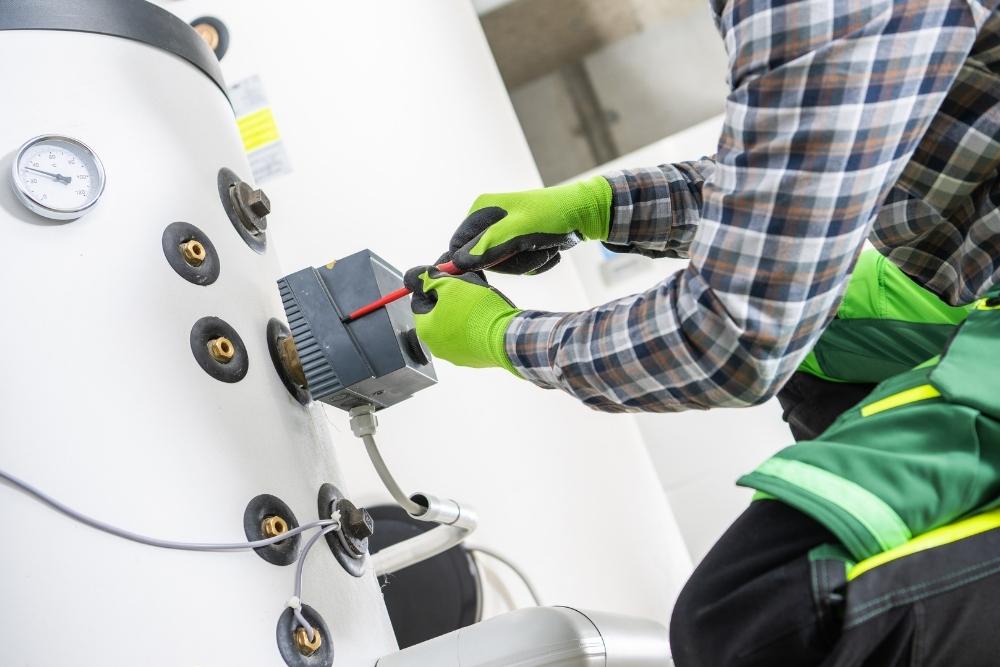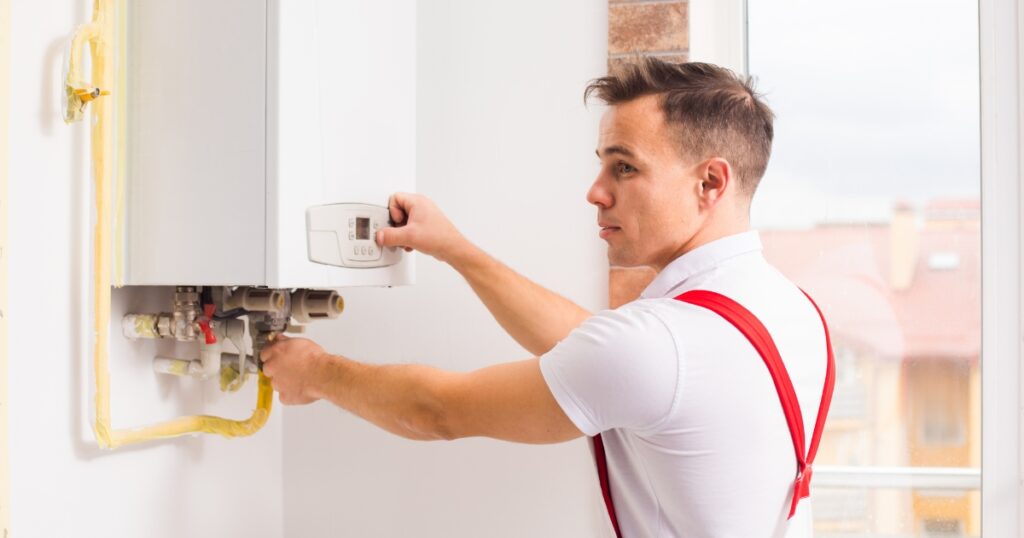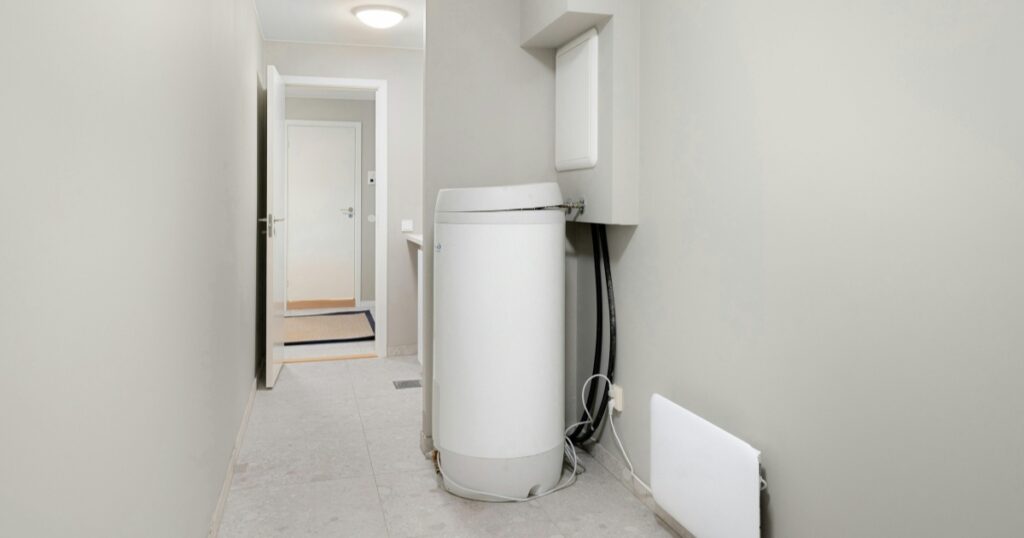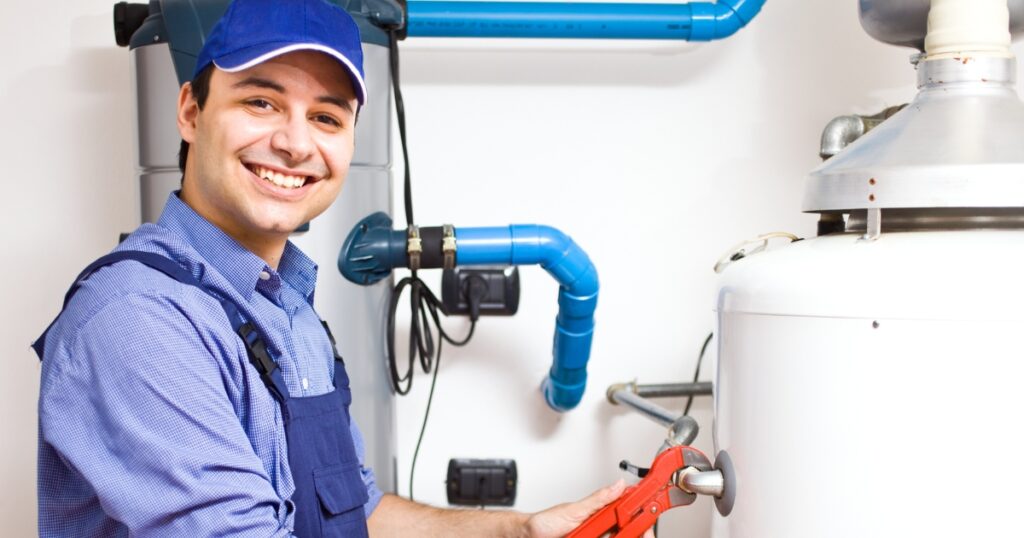Crikey, when your hot water system starts throwing a wobbly, chances are you’re wrestling with a wonky thermocouple. No worries, mate, we’ve grappled with this stuff up too and figured out that these little blighters are the backbone of any gas-fired heating gear.
Our easy-peasy guide has been whittled down to give you step-by-step instructions on how to have a stickybeak at and replace these critical components – ensuring your hot water system returns to its fighting fit form.
So pop the kettle on and let’s tussle with this common snag together!
Key Takeaways
- Thermocouples are vital components in gas-fired heating equipment, including hot water systems. They ensure safe and efficient operation by monitoring the presence of a pilot flame.
- Inspecting thermocouples involves checking for common issues like gas leaks and faulty connections. Testing for leaks can be done using a soapy water solution.
- Faulty thermocouples can be replaced by disconnecting the old one from the control box and pilot light assembly and installing a new one that is compatible with your system.
- Regular maintenance and cleaning of thermocouples help prevent future issues, such as carbon buildup or debris affecting performance. Signs of malfunctioning thermocouples include inconsistent water temperature or frequent pilot light failures.
Understanding Thermocouples and Their Importance in Hot Water Systems
Thermocouples are essential components in gas-fired heating equipment, including hot water systems. They play a crucial role in ensuring the safe and efficient operation of these systems by monitoring the presence of a pilot flame.
Unlike thermopiles, which generate electrical current from heat, thermocouples rely on differences in temperature to create voltage. Understanding how they function and their importance is vital for effective hot water system repair.
Definition and uses in gas-fired heating equipment
A thermocouple is a temperature sensor that sends an electrical signal to the control box of your gas-fired heating equipment, such as water heaters and furnaces. It comes into play when the pilot light is lit, releasing heat.
The function of the thermocouple is vital for maintaining safety; it responds to changes in temperature by generating voltage which controls the gas valve. If no heat from a flame touches the thermocouple (meaning if the pilot light goes out or fails), this device restricts gas flow, preventing hazardous leaks.
In short, a properly functioning thermocouple ensures that your home stays warm safely and efficiently.
Differences between thermocouples and thermopiles
Thermocouples and thermopiles are both important components in hot water systems, but they have some key differences. While a thermocouple is used to measure temperature, a thermopile is designed to generate electrical voltage.
Thermocouples consist of two different metal wires joined together at one end, while thermopiles are made up of multiple thermocouples connected in series. Another difference is that thermocouples produce a small millivoltage output, whereas the output of a thermopile can be significantly higher.
These distinctions make understanding their roles crucial when inspecting and replacing them in hot water system repairs.
Inspecting and Diagnosing Problems with Thermocouples
When inspecting thermocouples in hot water systems, it is important to look out for common issues such as gas leaks and faulty connections. Testing for leaks can be done by applying a soapy water solution to the fittings and observing if any bubbles form.

Troubleshooting steps should also involve checking the flame placement to ensure the proper functioning of the thermocouple. Regular maintenance and cleaning can help prevent future issues with thermocouples, but signs that a replacement may be necessary include inconsistent pilot light or furnace ignition.
Common issues and troubleshooting steps
We understand that dealing with common issues in your hot water system can be frustrating. But don’t worry, there are some troubleshooting steps you can take to resolve these problems with thermocouples.
First, check for any signs of malfunctioning, such as a weak pilot flame or no flame at all. If the flame is weak, try cleaning the thermocouple to remove any carbon buildup. You should also inspect the thermocouple for any physical damage or corrosion.
If everything looks good but the issue persists, it may be time to replace the thermocouple. Remember to consult a professional plumber for proper installation and safety precautions when working with gas-fired heating equipment like hot water systems.
How to test for leaks
To test for leaks in a thermocouple, start by turning off the power and gas supply to the hot water system. Then, use a spray bottle filled with soapy water and spray it onto the connections of the thermocouple.
Look for any bubbles or foaming that indicate a leak. If you see any bubbles forming, this means there is a leak and the thermocouple needs to be replaced. It’s important to address any leaks promptly to ensure the safe and efficient operation of your hot water system.

Replacing a Faulty Thermocouple
To replace a faulty thermocouple, start by shutting off the gas supply and allowing the water heater to cool down. Next, disconnect the old thermocouple from both the control box and pilot light assembly. Install the new thermocouple by connecting it back to the control box and pilot light assembly.
Step-by-step instructions for disconnecting and removing the old thermocouple
To disconnect and remove the old thermocouple, start by ensuring that the gas supply to your hot water system is turned off. Next, locate the control box on your water heater and carefully remove its cover.
Inside, you’ll find the thermocouple attached to the pilot light assembly. Disconnect any wires or brackets holding it in place, being sure to remember how it was installed for later reference.
Finally, gently pull out the old thermocouple from its housing, taking care not to damage any surrounding components.
Tips for selecting and installing a replacement
When selecting a replacement thermocouple for your hot water system, it’s important to choose one that is compatible with your specific make and model. Look for the same type of thermocouple as the original – usually either a standard or heavy-duty version.
Additionally, consider the length of the thermocouple and make sure it will fit properly in your system. When installing the replacement, carefully follow the manufacturer’s instructions and ensure proper alignment and connection.
Remember to turn off the gas supply before removing or installing a thermocouple to ensure safety throughout the process.
Preventing Future Issues with Thermocouples
To prevent future issues with thermocouples, regular maintenance and cleaning is essential. Make sure to inspect and clean the thermocouple regularly to remove any dirt or debris that may affect its performance.
Additionally, be vigilant for signs of a malfunctioning thermocouple, such as pilot light outages or inconsistent hot water supply, and take prompt action to replace it if necessary.
Proper maintenance can help extend the lifespan of your hot water system and ensure its efficient operation.
Regular maintenance and cleaning
Regular maintenance and cleaning are essential for keeping your hot water system running smoothly. By performing regular maintenance tasks, you can prevent potential issues with the thermocouple and ensure that your system is working efficiently.
One important task is to clean the thermocouple to remove any carbon buildup or debris that could interfere with its performance. This can be done using a soft cloth or brush to gently wipe away any dirt or residue.
Additionally, it’s important to inspect the thermocouple regularly for signs of wear or damage. Look for any cracks, corrosion, or loose connections that may indicate a problem. By staying on top of regular maintenance and cleaning, you can help extend the lifespan of your thermocouple and avoid costly repairs in the future.
It’s also crucial to keep an eye out for any warning signs that may indicate a malfunctioning thermocouple in your hot water system. These signs include inconsistent water temperature, frequent pilot light failures, or a weak flame on your gas burner.
If you notice these symptoms, it’s best to contact a professional plumber who can thoroughly inspect and replace the faulty thermocouple if necessary. Remember, safety should always come first when dealing with gas appliances, so it’s always recommended to seek professional assistance when handling any repairs or replacements involving the thermocouple in your hot water system.
Signs that a thermocouple may need to be replaced
A faulty thermocouple can cause issues with your hot water system. If you notice that the pilot light keeps going out or if there is no hot water despite the burner being on, these are signs that your thermocouple may need to be replaced.
Another indication is if the control box doesn’t stay lit after following troubleshooting steps. It’s important to address these signs promptly to ensure a properly functioning hot water system.
Get an Inspection Done for Your Hot Water System
In conclusion, inspecting and replacing thermocouples in hot water system repair is crucial for maintaining a properly functioning system. By regularly inspecting and testing thermocouples, any potential issues can be addressed and repaired promptly.
Remember to always prioritise safety by hiring a professional plumber to handle the replacement process. With proper maintenance and care, your hot water system will continue to provide reliable service for years to come.






